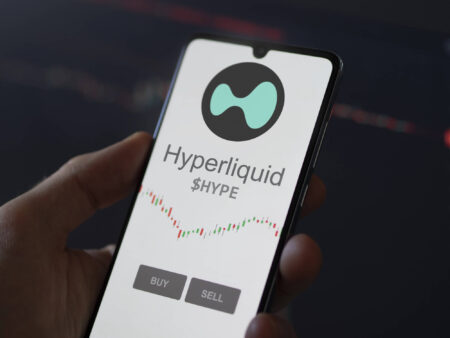Non-fungible tokens (NFTs) repeatedly made headlines this year. While many projects simply issued unique images, some experiments went a step further. A conversation with Clam Island CEO Sandy Zhang on the Binance Smart Chain (BSC), NFT gaming, and Decentralized Finance (DeFi).
The three founders of Clam Island are veterans in the decentralized finance and NFT scene, and have been into crypto since the early days. After a trend of forking (copying) of decentralized exchanges last summer, that led to a gold-rush phenomenon in the yield-farming space, the market adjusted to this inefficiency by a shortening of the lifetime of those forked exchanges before yield chasers moved on to the next gold mine. The founders of Clam Island saw the necessity to create and build an innovative, fun and sustainable yield-farming model, using the power of NFTs.
Out of a hackathon an idea was born and it grew successively. When the globally distributed team had built a 3D Island as the web interface, the Clam Island Vision began to form. During the Filecoin Launchpad Accelerator Programs of Tachyon (the accelerator-arm of ConsenSys – the company behind Ethereum wallet Metamask) the founders honed and intensified that Vision with guidance from high-profile blockchain experts, mentors, leaders and investors. Clam Island’s long term vision is to not only be a yield-farming platform but a full ecosystem for other blockchain games, that will be onboarded and integrated on Clam Island and its ecosystem. Aside from that, they plan to link their Clam and Pearl NFTs to real-world clams and pearls in the mid-term.
A conversation with CEO Sandy Zhang about DeFi, NFT gaming and the Binance Smart Chain.
CVJ.CH: The NFT sector has attracted a lot of attention in the past year. What do you think of the latest developments?
Sandy Zhang: It certainly has been an interesting year for NFTs. But as much as the hype has been building for NFTs, I think we are only just scratching the surface. Most of the NFT craze has been focused on digital artwork. And that is not surprising, since art on the blockchain just makes sense. However, NFTs are capable of so much more.
I think two particular areas of NFT development will be especially interesting to watch. These would be gaming and finance. We have already seen something of the power of gaming NFTs, in the early days through projects like CryptoKitties, and more recently Axie Infinity. I am excited to see where the next generation of NFT-based games can take us. On financial NFTs, this is something that is at a much earlier stage than gaming NFTs and has yet to capture a lot of mainstream attention. However, I believe its rise will be inevitable – the possibilities, when you combine NFTs with the burgeoning DeFi sector, are almost endless.
Which industries are seeing the most benefits from the technology?
Artwork, gaming and finance. And in terms of artwork, I don’t just mean simple images. There are some innovative projects out there that are using the power of NFTs to revolutionalize the way people interact with all types of art and their artists, for example in the music scene.
How can the topics NFT and Gaming be combined efficiently?
For gaming, I think it is important that NFTs are designed to be interactive and microtransactional. In some ways, the idea of an interactive and changing NFT is almost antithetical to the concept of immutability. The key, in my view, is to make interactivity occur on-chain with any changes to an NFT being made provably fair.
What is the biggest challenge for projects like Clam Island?
As we are building a completely novel ecosystem, the biggest challenge is to stay vigilant and engaged in the early stages of launch. Because the way the market drives the ecosystem is likely to diverge from our own ideas.
Why Binance Smart Chain instead of Ethereum?
The microtransactional nature of interactive NFTs means that it would be impossible to play the Clam Island game unless one wants to spend hundreds, perhaps thousands of dollars in transaction fees alone to farm Pearls using Clam NFTs. A low-fee chain was necessary. BSC was chosen because at the time we began developing the platform in February 2021, it was the clear alt chain leader in terms of adoption, and other chains like Polygon were still immature.
What differentiates Clam Island from competing projects in the space?
Firstly, we call ourselves a play-to-invest platform, as distinct from play-to-earn. Unlike play-to-earn, there is no grinding element. We are much more friendly to the casual gamer, who can start up Clam Island, farm some Pearls using Clams, check their investments, boost investment returns using their Clams and Pearls, and then switch off for the day. As far as I am aware, we are the only platform out there combining yield farming with NFTs in such a way to give financial utility to every NFT minted on the platform, instead of relying on a secondary market, which is often illiquid.
Our NFTs are also full 3D assets and not just GIFs or videos, which most animated or “3D” NFTs tend to be. Last but not least, our NFTs have billions of possible trait combinations, and the randomized traits for each minted NFT are generated directly on the blockchain. Not many games actually do this. In fact, the curious nature of NFTs largely relying on the InterPlanetary File System (IPFS) to dictate their content means that NFTs can often be anything but immutable.
What upcoming developments are you particularly excited about?
I am looking forward to seeing more innovative ways to combine NFTs with gaming and finance. The beauty of this space is that it is so new that no one can really predict where it will go, and what sort of product will become popular. If someone had told me two months ago that an NFT with random item names in text would be a stroke of genius, I would have thought it was either a joke or you were crazy. And now a Loot NFT costs over 10,000 dollars!

Sandy Zhang has a background in law, IT and commerce. He is an avid tech enthusiast and has been in the crypto scene since 2016. He has a knack for distilling and navigating complex rules and ecosystems. This has made him a very effective advisor to startups and multi-national conglomerates alike throughout his career. He now brings his talents to Clam Island as its chief ecosystem designer and visionary.




